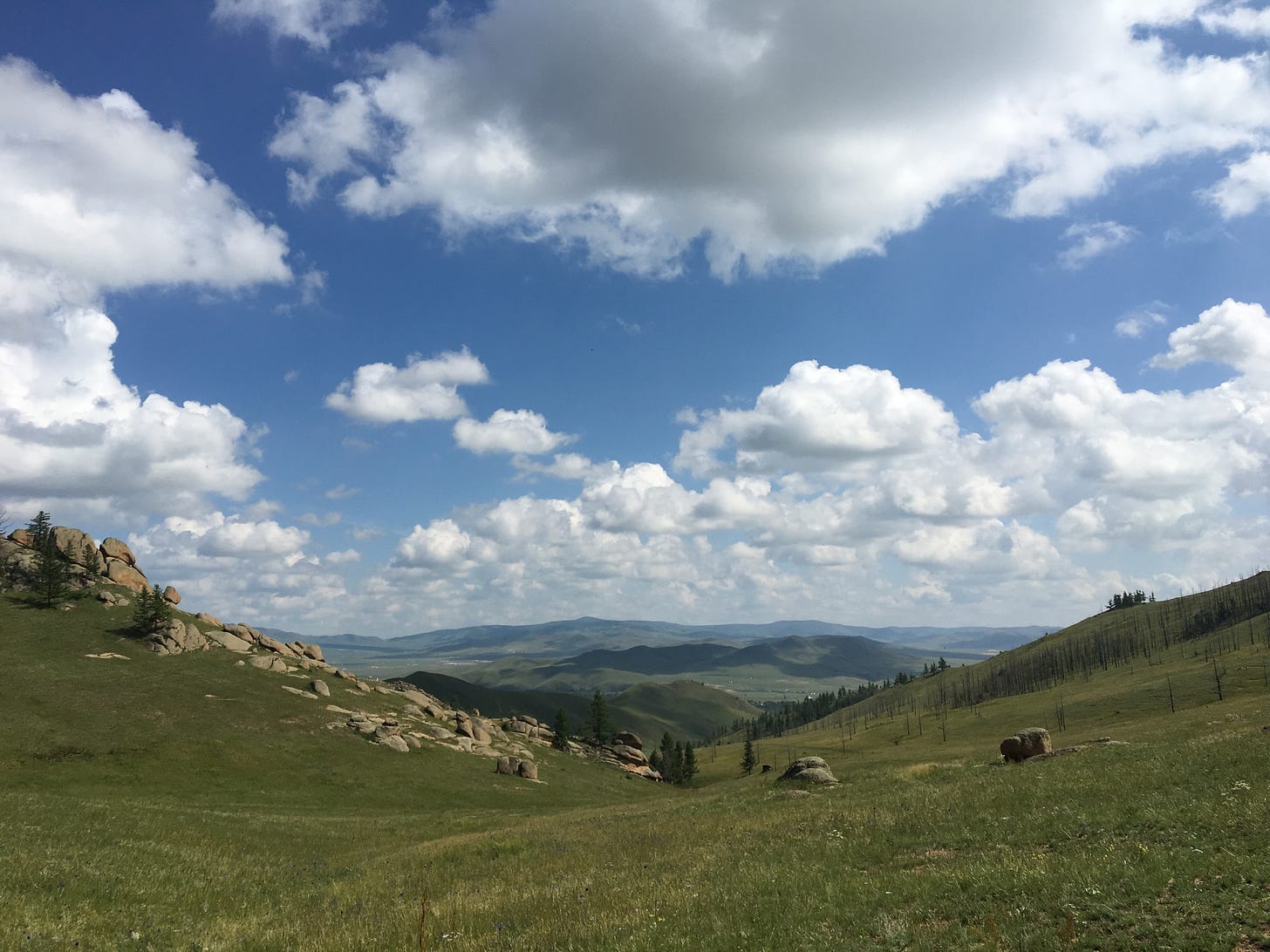Bravery
Notes on writing, Sanmao, and ideas of courage
The flight to Hong Kong skims deserts. I watch the interactive map as we fly across the Taklamakan and later cruise just shy of the Gobi. I’ve never been to a desert, but I remember feeling the glare and wonder in Stories of the Sahara, Sanmao’s accounts of the Western Sahara in the ‘70s. She was an Asian among the Sahwari people and a feminist woman in a man’s time and place. She was also an uninhibited adventurer, and she wanted to feel the physical freedom of the desert expanse. In this new world, she anointed herself as the local medical healer. She fought off male attackers in the still hang of night. Welcomed other people’s children into her home and walked around in long black dresses, seen.
—
I’ve been working on my final portfolio for my master’s degree and thinking about courage.
Art is rarely thought of as a brave vocation. But in We Need Your Art, Amie McNee posits that making art requires moving through self-doubt and the stigma of art as unproductive and unimportant. She says that when you’ve made art, ‘you have also had to confront yourself, your mind, your ego. You have had to witness yourself, and then you made something with it.’
Sometimes I feel this. Careful fingers prying pith away from bone, unavoidable rips and bleeds, until it’s there in front of me, in my hands. Examining trauma strands—of the past, of being an inconsistency in a sameness, of being made up of pieces that always refract the light—and trying to not turn away. Then pressing these intimacies into typeface so they can appear on my peers’ screens.
Other times, fraudulence. I think about my motive for writing these things, how I need to remove them from my body to understand them or feel any relief. I must write them and I will write them regardless. I wonder if necessity and bravery can be in communion, or if the former cancels the latter out.
—
Is it brave to excavate yourself, in a painting or a poem or a project you care about?
Or to dance in front of people? A friend said so when I told him about my dance classes. But he presents to rooms full of academics and businesspeople, and I can’t imagine doing that, not without dissociating to alleviate the simultaneous numbness and pressure. Until he mentioned it, it had never occurred to me that dancing in community was anything but vital for this body. It’s there again, necessity and/or bravery.
What about refusing extremity? Is it brave to not subject the body to soup skin or parched flesh? There’s something strangely alluring about extreme conditions. I’m in Scotland which, while it could be wilder, has its drama. Hostile winds and deep cold. Before that, Hong Kong’s sap and fug. I think it’s hard—brave—to live in the temperate, the grey space, the mild. To let yourself.
—
K and I want to return to Mongolia. Our last trip, on the steppe, was life-changing, and we’re hesitant to try and replicate it, so we look at the Gobi. But when I research places to stay, I see tents that look like gers but are not gers. Facsimiles of gers. They are ideas of authenticity, neat hotels for tourism. I understand the purpose, but it unsettles me.
That isn’t what we’re looking for, K says over my shoulder.
I think: maybe we are trying to replicate our previous trip after all.
When Sanmao arrived in the Sahara from Madrid, her partner said, ‘I don’t think you’ll get used to desert living for the long haul.’ He told her that once she’d finished travelling, they could leave together. But in response, she found meaning. She did not turn away from what she may not have liked or known. She lit their spartan home with white candles at night.
—
After landing in Hong Kong, I wait outside for a taxi to the hotel. Air-con relief as we speed into the city. When I arrive, I sit to the desk with my laptop and open the essay I’ve been working on. I had ideas on the plane. But I’m too tired to summon anything now, least of all the courage to tease self from bone. Instead, I go out for noodles and dumplings, offering fragments of my Cantonese to the waitress and wondering about the shapes that bravery can take.

